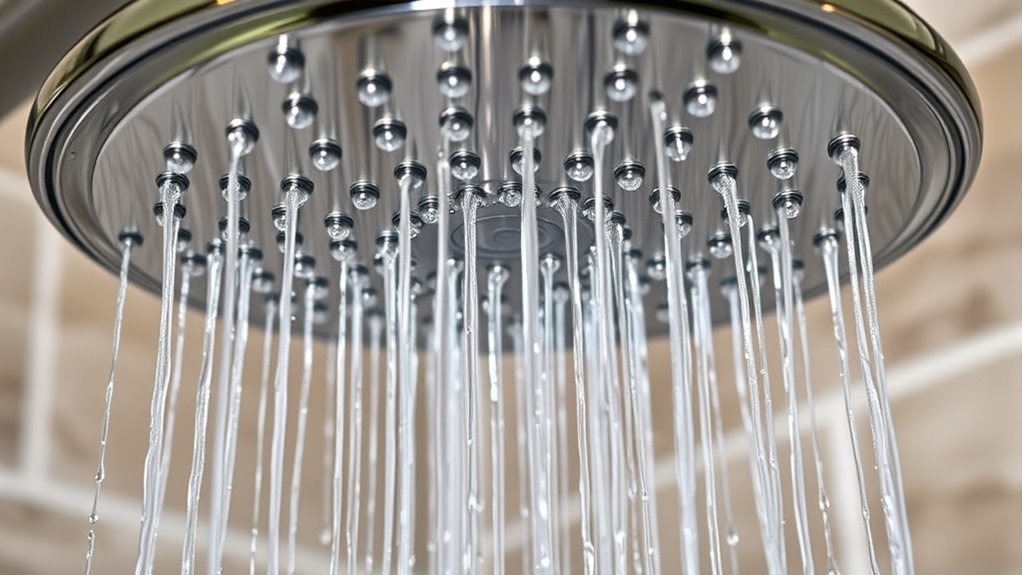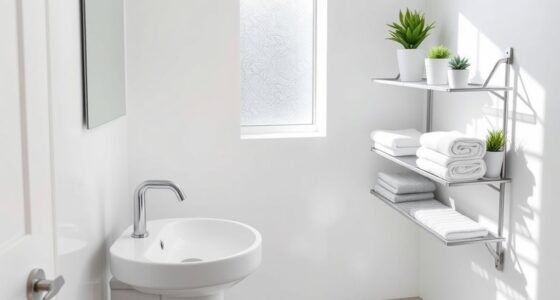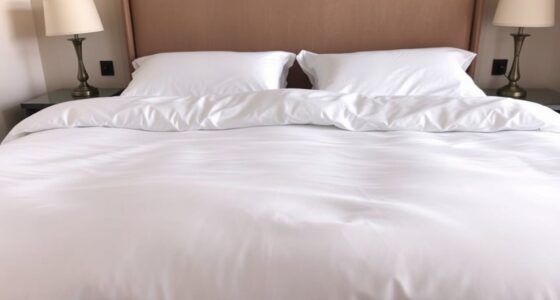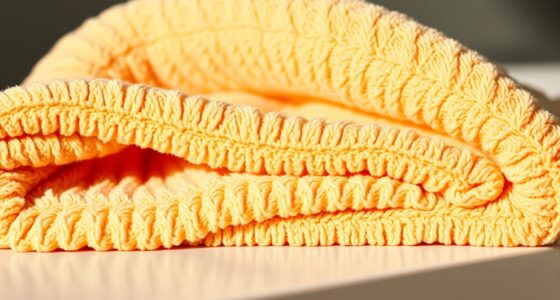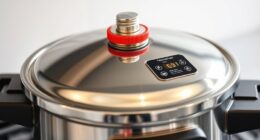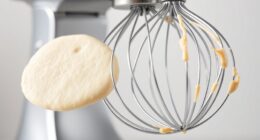Replacing your showerhead with a water-efficient model can save you around 10 gallons per 10-minute shower, reducing your annual water use by over 3,650 gallons. This also lowers your hot water and energy bills, saving about $11 a year depending on rates. Most easy-to-install options maintain strong water pressure while using less water. Keep going to see exactly how much this simple upgrade can benefit you and the environment.
Key Takeaways
- Replacing an old showerhead with a low-flow model can save approximately 10 gallons per 10-minute shower.
- Annual water savings from switching can reach around 3,650 gallons, significantly reducing your water bill.
- Using less hot water decreases energy costs, as heating water accounts for roughly 20% of household energy use.
- Modern low-flow showerheads are easy to install and maintain, often requiring no tools or professional help.
- Long-term savings on water and energy costs make replacing your showerhead a cost-effective, environmentally friendly upgrade.
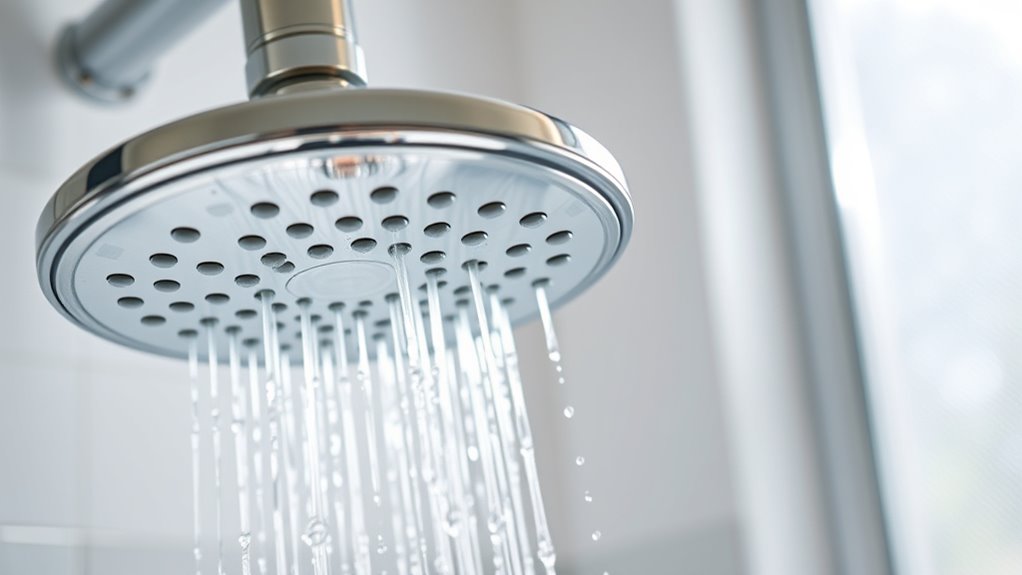
If you’re looking to cut water usage and save money, replacing your old showerhead with a water-efficient model is a smart move. Traditional showerheads often use around 2.5 gallons per minute (GPM), but many older models can use 3.5 GPM or more. Upgrading to a low-flow showerhead, rated at 1.5 to 2.0 GPM, can significantly reduce your water consumption without sacrificing comfort. Think of it this way: if you take a 10-minute shower daily, a standard 2.5 GPM showerhead consumes 25 gallons of water. Switch to a 1.5 GPM model, and that drops to just 15 gallons—saving 10 gallons per shower. Over a year, that adds up to roughly 3,650 gallons saved.
Replacing your showerhead with a low-flow model can save thousands of gallons and money annually.
The math becomes even more compelling when you consider the cost savings. Water bills depend on local rates, but if your city charges around $3 per 1,000 gallons, saving 3,650 gallons annually could cut your bill by about $11. Keep in mind, this doesn’t include energy costs associated with heating water. Since hot water accounts for roughly 20% of household energy use, reducing hot water usage by switching to a water-efficient showerhead also lowers your energy bills. Heating 10 gallons of water costs less than heating 25 gallons, so your energy savings can be just as meaningful as your water savings.
Installing a water-efficient showerhead is straightforward. Most units are designed to fit standard shower arms and don’t require special tools or skills. Once installed, you’ll likely notice a slight change in water pressure, but many models are engineered to maintain a satisfying shower experience despite the lower flow rate. This is because modern low-flow showerheads are designed to maximize water velocity and spray pattern, providing a comfortable shower while conserving resources. Plus, many models include aerators that mix air with water, giving you the feeling of a robust stream without wasting water. Additionally, the design of modern showerheads often incorporates features that improve water efficiency while maintaining comfort and performance.
Ultimately, the math shows that switching your showerhead isn’t just about being eco-friendly; it’s about making a tangible difference in your water and energy bills. Over time, the savings multiply, offsetting the initial cost of the new unit. It’s a quick upgrade with lasting benefits—smaller water bills, less energy use, and a lighter environmental footprint. When you do the math, it’s clear that replacing your showerhead is a simple yet impactful step toward smarter resource use.
Frequently Asked Questions
How Often Should I Replace My Showerhead for Optimal Savings?
You should replace your showerhead every 1 to 2 years for ideal savings. Over time, mineral buildup and wear reduce its efficiency, causing you to use more water and energy. Upgrading to a low-flow model can considerably cut your water bills and environmental impact. Regularly checking for leaks and performance issues helps you decide if a replacement is needed sooner, ensuring you maximize savings and maintain good water pressure.
Are There Government Rebates for Installing Water-Efficient Showerheads?
Like Robin Hood stealing from the rich to give to the poor, government rebates aim to help you save. Yes, many local and federal programs offer rebates for installing water-efficient showerheads. You should check your state’s energy or water department website or contact local utilities to see what’s available. Taking advantage of these rebates not only helps the environment but also puts money back in your pocket.
Do High-Efficiency Showerheads Affect Water Pressure?
High-efficiency showerheads can slightly reduce water pressure, but it usually isn’t noticeable unless you have an older, low-pressure system. Modern designs are engineered to maintain a strong, satisfying shower experience while conserving water. If you find the pressure too low, you might consider models with adjustable settings or larger spray outlets. Overall, upgrading to a water-efficient showerhead often balances water savings with a comfortable shower experience.
Can I Install a New Showerhead Myself or Need Professional Help?
You can definitely install a new showerhead yourself, and it’s easier than you might think. Imagine stepping into your bathroom with the tools in hand, feeling the cool metal of your new fixture. Turn off the water, unscrew the old showerhead, and screw on the new one—no special skills required. Just follow the instructions, and you’ll have a water-saving upgrade in no time, saving both water and money effortlessly.
How Do Showerhead Flow Rates Impact Hot Water Consumption?
Showerhead flow rates directly impact your hot water consumption. A higher flow rate means more water flows through, using up hot water faster and increasing energy use for heating. Conversely, low-flow showerheads reduce water flow, helping you save hot water and energy. By choosing a showerhead with a lower flow rate, you can extend your hot water supply and cut down on energy bills, making your household more efficient.
Conclusion
So, savvy shoppers, swapping your showerhead is a simple step that saves water and cuts costs. By choosing a water-efficient model, you’re not just conserving H2O—you’re creating a cascade of savings. Feel the flow of a fresher, friendlier fixture that fights waste and fosters a greener globe. Small switches make a mighty difference—so shower smart, save swiftly, and stand strong in the sustainable stream!
